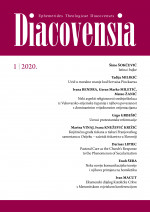Neke novije komunikacijske teorije i njihova primjena na homiletiku
Some Recent Communication Theories and Their Application in Homiletics
Author(s): Enoh ŠebaSubject(s): Christian Theology and Religion, Communication studies
Published by: Katolički bogoslovni fakultet u Đakovu
Keywords: communication theories; homiletics; preaching; conversation; dialogue;
Summary/Abstract: Viewed from the perspective of communication processes, it may be concluded that traditional preaching mostly follows the linear model of interpersonal communication. However, this relationship entails limitations that prevent preaching from reaching its full communicational potential. This paper evaluates some recent communication models (interactional and transactional) in order to, first, highlight their particular advantages over the linear model (i.e. the reciprocity of communication and the presence of feedback, the role of nonverbal communication, the relational dimension of communication, the process of creating meaning...), and also to suggest some concreteways for their application in homiletical practice which would contribute to a more comprehensive understanding of preaching and its improvement. Furthermore, the aim is to underline how the application of these insights can redefine the roles of key participants in homiletical communication – the preacher, the believers, and the message. The scope of these changes points to the possibility to start considering preaching within the framework of a different, new paradigm – the paradigm of conversation. Such a change in the frame of reference makes it easier to reflect on preaching which, while preserving its monologue form, in fact promotes dialogue, mutuality, and a higher level of understanding within the community of faith.
Journal: Diacovensia: teološki prilozi
- Issue Year: 28/2020
- Issue No: 1
- Page Range: 107-127
- Page Count: 21
- Language: Croatian

